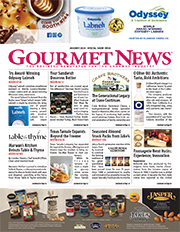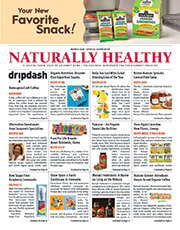Starbucks Outlines Reusable Cup, Recycle App, EV Route Plans
Starbucks has outlined efforts to reduce waste through innovative reusable cup programs, launched a waste and recycling app to support partners’ sustainability efforts and a pilot program with Volvo to help electrify a driving route from the Colorado Rockies to Seattle.
“We have a bold long-term sustainability vision and ambitious goals for 2030,” said Starbucks president and CEO, Kevin Johnson. “Starbucks partners around the world are passionate about protecting our planet and are at the very center of driving the innovation that enables us to give more than we take from the planet.”
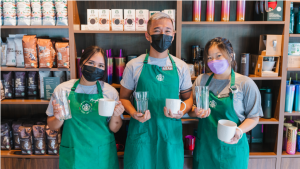 To help reach the company’s goal of reducing waste by 50 percent by 2030, Starbucks is shifting away from single-use plastics and piloting reusable cup programs in six markets around the world. By the end of next year, customers will be able to use their own personal reusable cup for every Starbucks visit in the U.S. and Canada – including in café, drive-thru and mobile order and pay. The goal, by 2025, is to create a cultural movement toward reusables by giving customers easy access to a personal or Starbucks provided reusable to-go cup for every visit.
To help reach the company’s goal of reducing waste by 50 percent by 2030, Starbucks is shifting away from single-use plastics and piloting reusable cup programs in six markets around the world. By the end of next year, customers will be able to use their own personal reusable cup for every Starbucks visit in the U.S. and Canada – including in café, drive-thru and mobile order and pay. The goal, by 2025, is to create a cultural movement toward reusables by giving customers easy access to a personal or Starbucks provided reusable to-go cup for every visit.
Starbucks continues to test multiple “Borrow-A-Cup” and reusable operating models in the United States, United Kingdom, Japan and Singapore, with more countries in the year ahead. In addition, the company continues to encourage customers to bring their own cup and to emphasize for-here-ware as the default sit-and-stay experience, while exploring new customer incentives and technologies, such as cup washing stations at café counters.
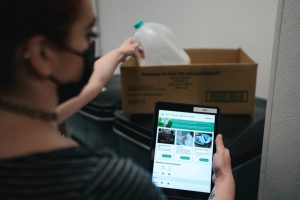 The company is also launching a new Starbucks Partner Waste and Recycling App, developed by partners as part of the Greener Stores Innovation Challenge, to help partners navigate complex and unique store recycling guidelines. The app puts everything partners need to know to reduce waste and recycle in one place; it features store specific information and notifications, a sorting guide and the option to create store specific signage for partners and customers.
The company is also launching a new Starbucks Partner Waste and Recycling App, developed by partners as part of the Greener Stores Innovation Challenge, to help partners navigate complex and unique store recycling guidelines. The app puts everything partners need to know to reduce waste and recycle in one place; it features store specific information and notifications, a sorting guide and the option to create store specific signage for partners and customers.
“Starbucks is spending this year testing innovative new ways to reduce waste and reduce our carbon footprint,” said Michael Kobori, chief sustainability officer. “Some of our best innovations, like the Waste and Recycling App, come directly from our store partners. Our store partners know their customers and communities best. When we work together with our partners, we find better solutions to create a more sustainable future for our planet and people.”
In addition, Starbucks continues to rapidly expand its roster of renewable energy and decarbonization projects in the United States, including a new pilot program with Volvo Cars to electrify the driving route from the Colorado Rockies to the Starbucks Support Center in Seattle, providing a string of familiar, reliable, clean and safe places to recharge themselves and their battery-powered vehicles.
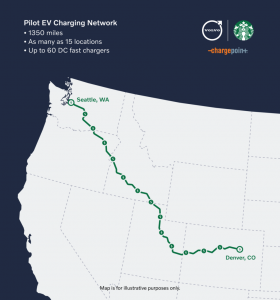 By the end of 2022, Volvo-branded electric vehicle chargers, powered by ChargePoint, will be available at up to 15 Starbucks stores along a 1,350-mile route from the Denver area to the coffee company’s Seattle headquarters, as part of the company’s 2,700 Greener Store portfolio. These DC Fast Chargers will be placed at Starbucks stores about every 100 miles, adding much-needed peace of mind for EV drivers, who we know see today’s limited charging infrastructure as a major barrier to purchase. While customer’s cars are recharging outside, drivers can relax comfortably inside with their favorite Starbucks beverage.
By the end of 2022, Volvo-branded electric vehicle chargers, powered by ChargePoint, will be available at up to 15 Starbucks stores along a 1,350-mile route from the Denver area to the coffee company’s Seattle headquarters, as part of the company’s 2,700 Greener Store portfolio. These DC Fast Chargers will be placed at Starbucks stores about every 100 miles, adding much-needed peace of mind for EV drivers, who we know see today’s limited charging infrastructure as a major barrier to purchase. While customer’s cars are recharging outside, drivers can relax comfortably inside with their favorite Starbucks beverage.
By 2030, Starbucks aspires to lead the retail industry in decarbonization solutions, including Electric Vehicle charging and onsite solar availability at stores and in adjacent locations. Starbucks plans to continue expanding its solar pilot locations to 55 new stores this year.
Gourmet News reports leading companies in corporate responsibility. Subscribe now so you don’t miss anything!

